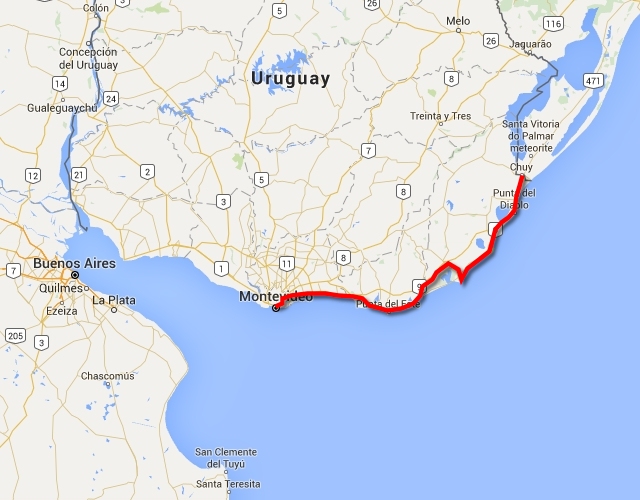
Nothing compares to the simple pleasure of a bike ride. J.F.Kennedy
Search this website
The Atlantic Coast
Chuy, La Coronilla, Parque Nacional de Santa Teresa, Punto del Diablo, Aguas Dulces, La Pedrera, La Paloma, Rocha, José Ignacio, La Barra, Punta del Este, Atlántida, Montevideo
In Chuy I had to do some basic planning for the following days, an activity I do not really enjoy. I had to book accommodation in Montevideo, so I would not have to cycle to every corner of it searching for a place to stay. I assessed that if I did not rush, but took my time along the coast, I would arrive there on the Saturday. I found a suitable hostel and booked a room.
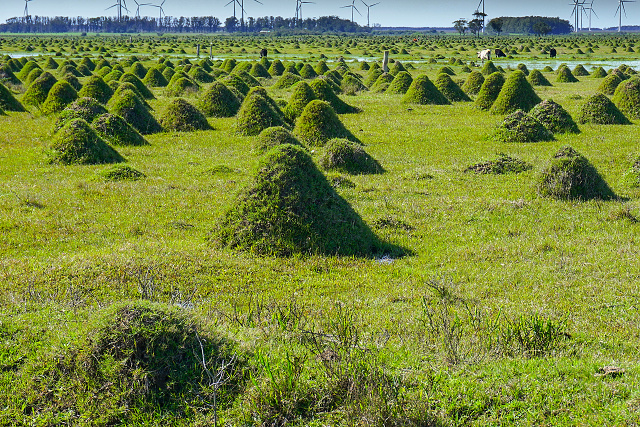
Near Chuy: Thousands of small mounds in meadow overgrown with grass
I left Chuy on Road 9 – direction Montevideo. I passed through a border control post without realizing it and they did not spot me either. Flat road, light wind, little traffic and a decent side lane, usable for cycling. Ideal conditions.

Near Chuy: Gaucho driving cows
I was still to see the ocean. The road was 1.8 km from the sea, so to reach the coastal villages, I would have to turn off on to a minor, often unpaved road. I passed the first turn-off to Barra del Chuy, but took the one to La Coronilla. It was only a little more than 1 km from Road 9. Through a poor village, not giving the impression of being an important recreational center, I reached a beautiful sandy beach stretching for several kilometers along the coast. Nevertheless, a half-dilapidated restaurant was situated on the cliff, a dead cow smelling of rotten meat lay on the beach. I did not find the place appealing.
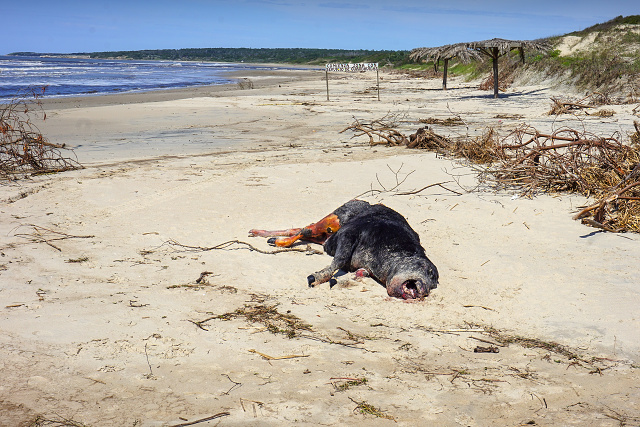
La Coronilla: All ready for the season, only a dead cow sunbathing on the beach now
I returned to Road 9 and spotted a sign with a picture of a plane. 500 meters later, the road got wider, a runway threshold marked with white lines and the number 21 appeared. Two kilometers later, the runway was terminated with white-marked treshold again. And then, as some of us knowledgeable enough to add or subtract number 18, a mark with the number 03 appeared.
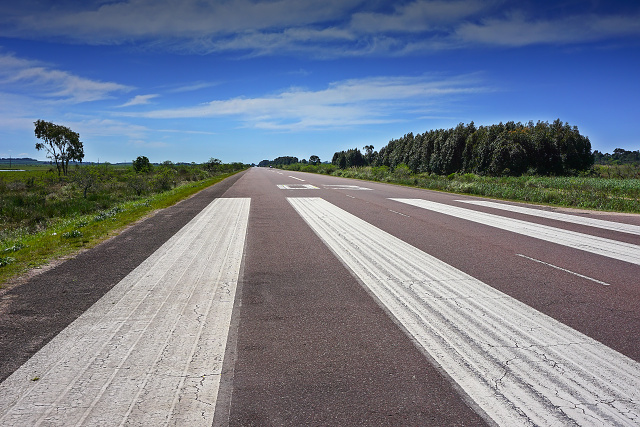
Road 9 km 309: The road turns into a runway - here is the trehold in direction 03
From the top of the hill, the Santa Tereza Fortress was smiling at me. It was very like San Miguel fortress which I had visited the day before. A soldier at the gate entered my name into the visitor's book and I was able to continue. The fortress was closed, it only opened on Wednesdays and Sundays out of season. However, it was obvious from the outside that the inside would not differ much from the one I had seen the previous day.

Fortaleza de Santa Tereza: Fort entrance
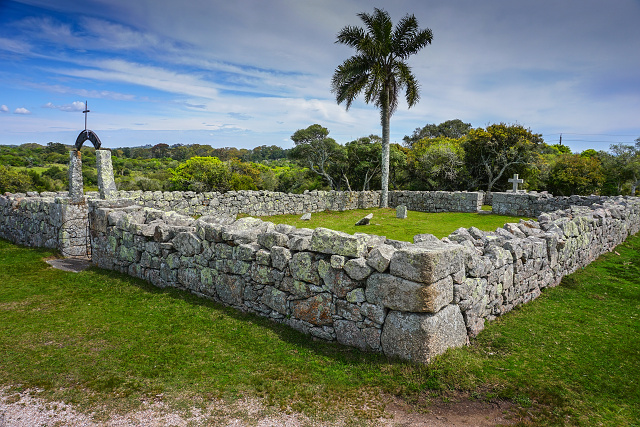
Fortaleza de Santa Tereza: Cemetery
Parque Nacional de Santa Teresa
A narrow road towards the ocean continued on from the fortress, but I did not know where it led. I returned to Road 9 and arrived at the main entrance to the Santa Teresa National Park. There was always the same procedure at the gates, except that this time the soldier was a good-looking lady in army uniform. I asked if the campsite was open and she assured me that it was. An army center – Capatacia – was situated close to the gate and there was even a store which was open. I welcomed the news gladly, as I did not have many supplies left. When I had taken all the goods up to the cashier, she informed me that the store was intended only for army personnel and that they could not sell me anything. I was to visit a store in the park which would be open the following day.

Parque Nacional de Santa Tereza: Capatacia - army headquarters of park management
I viewed a series of buildings around Capatacia – a shady garden, a massive and wildly overgrown greenhouse, and a bird hide on the nearby lagoon. Then I slowly cycled past several beaches and ended up in Pajarera, where aviaries as well as open areas for animals were situated, a bridge over a lagoon with plenty of water birds, an artificial waterfall, cages of baboons, and a children's playground. In the nearby forest there was something reminiscent of a campsite, but the area was only intended for picnics and day visits.
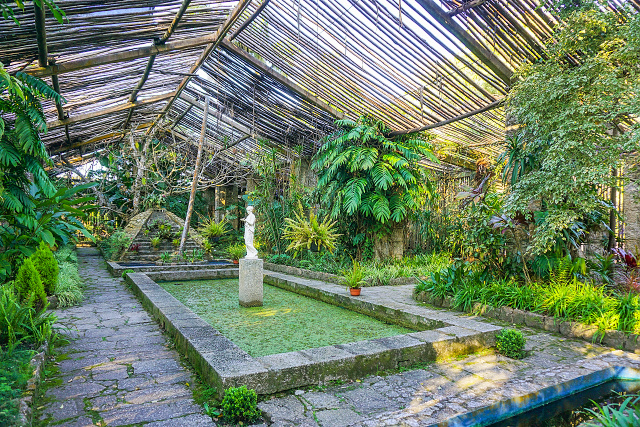
Parque Nacional de Santa Teresa: Sombrácuio
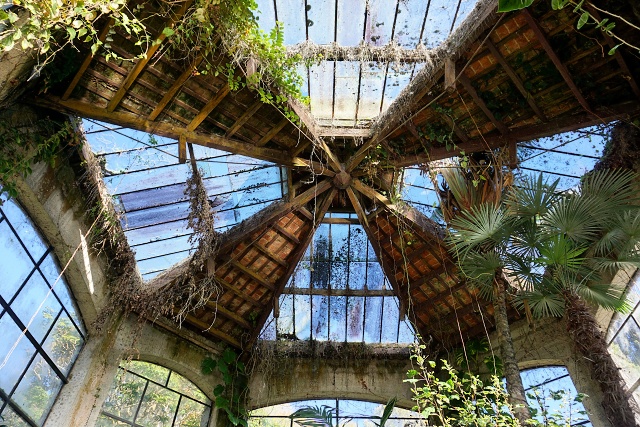
Parque Nacional de Santa Teresa: Invernáculo – greenhouse roof
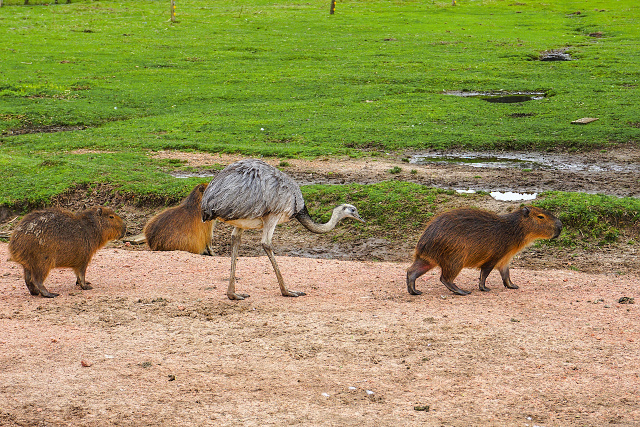
Parque Nacional de Santa Teresa: Animals are accustomed to humans and can be seen up close
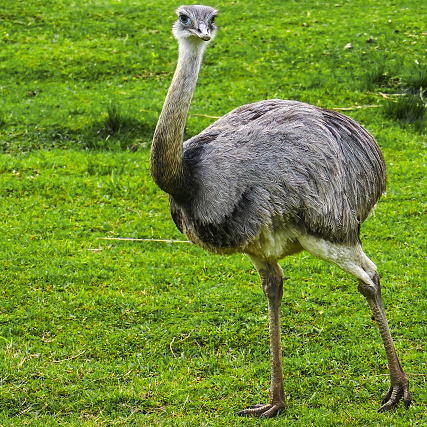
Parque Nacional de Santa Teresa: Nandu

Parque Nacional de Santa Teresa: The park is home to a vast number of birds from small to big and also birds of prey
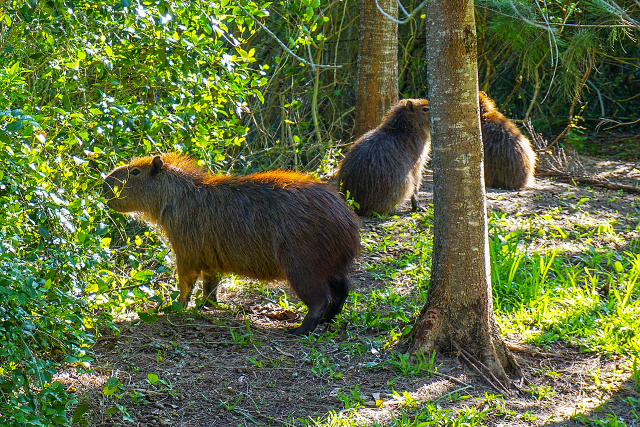
Parque Nacional de Santa Teresa: In the morning I spotted wild Capybara grazing in the forest
A real campsite was located in Punta de la Moza, close to the beach of the same name. The reception was closed, but the bathrooms with showers were open and functional, even with hot running water. I used my last reserves to make some spaghetti and felt content. I watched the surfers, and walked along a long sandy beach. There was a total of only three tents in that large campsite. However, the surfers in one of them made such a noise during the night that they woke me up and I had to get up and ask them to lower their volume.
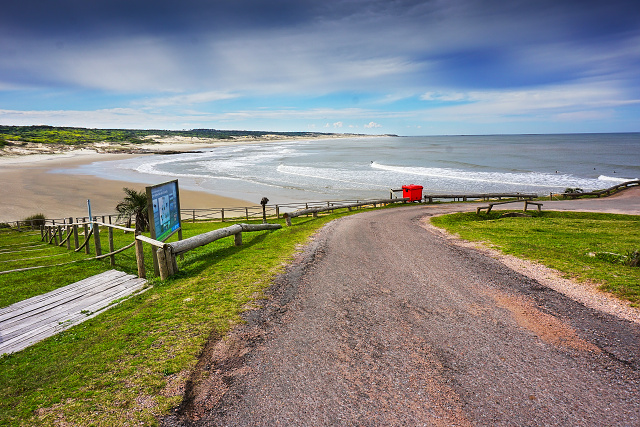
Parque Nacional de Santa Teresa: Playa La Moza is one of the best surfing beaches in Uruguay
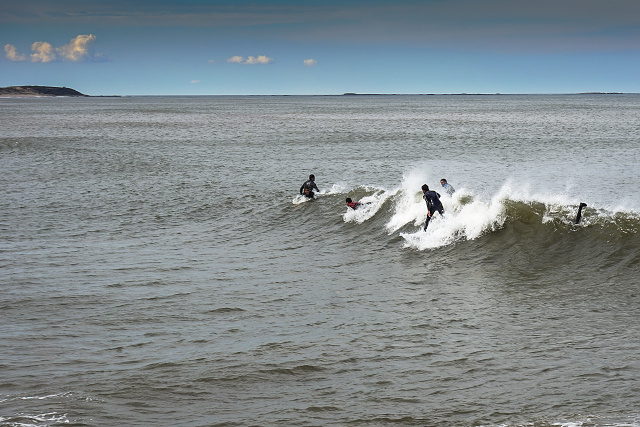
Parque Nacional de Santa Teresa: Surfers on Playa La Moza
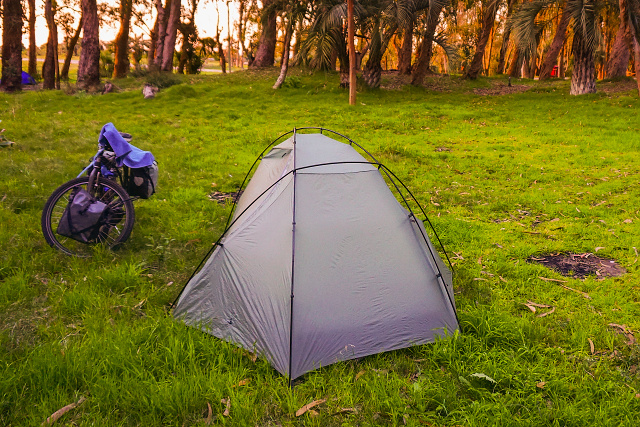
Parque Nacional de Santa Teresa: My camp at La Moza
Punta del Diablo
Not even 10 km from the National Park, there was another site that could not be missed. Punta del Diablo was earlier a quiet fishing village with an impressive rocky coastline and attractive beaches. The fishermen have remained to the present day, but have changed their profession to providing services – accommodation, selling food and drinks – to the large surfing community which literally takes over the village in season. Even out of season, it was better there than in La Coronilla.
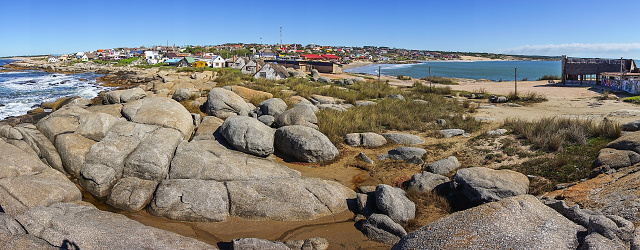
Punto del Diablo: Panorama
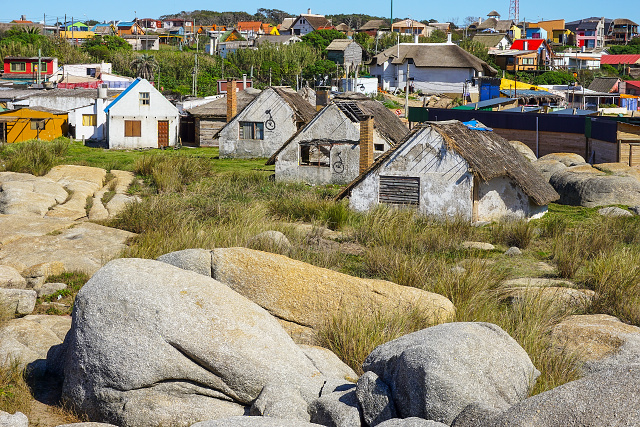
Punto del Diablo: Old fishing cabins
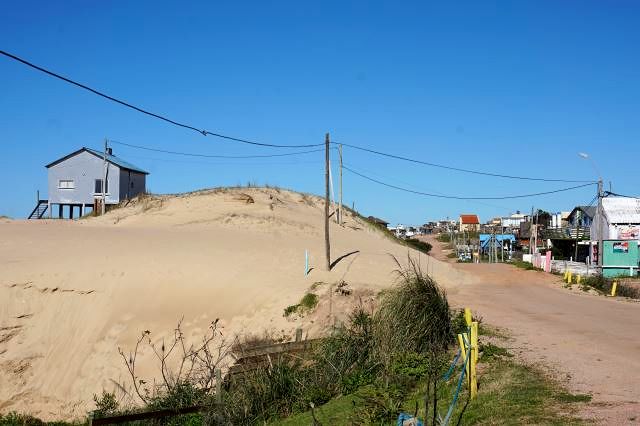
Punto del Diablo: Coastal dune
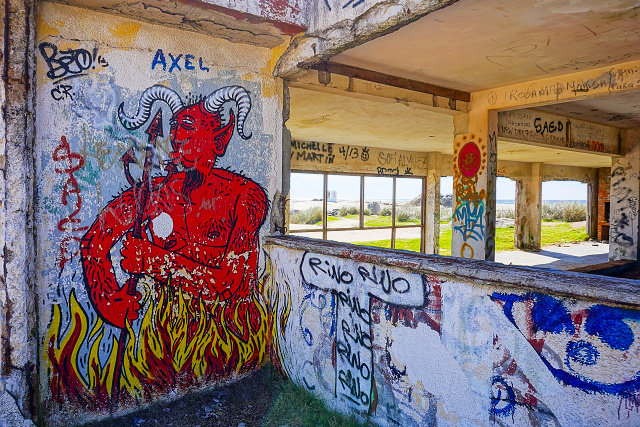
Punto del Diablo: Devil painted on ruined coastal restaurant
I met a boy from Brazil there, who was on a 9-day motorbike trip. However, he seemed to have enough luggage for 9 years. He insisted on taking several selfies with me, so I also took a photo of him in return.
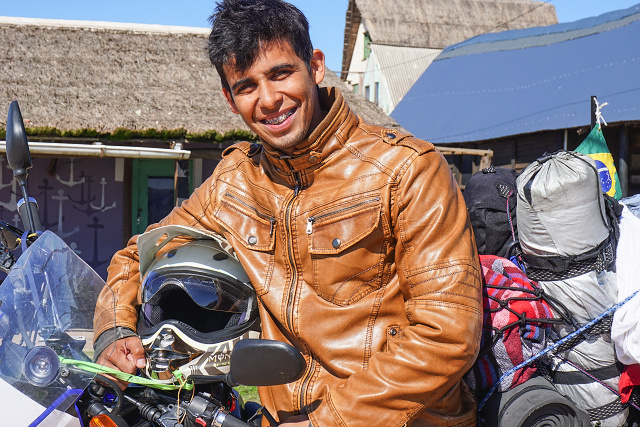
Punto del Diablo: Brazilian cyclist on 9-day trip
I replenished my bread reserves and began the trip to Castillos without any problem on coastal Road 10. I was not worried, many places were marked on the map, I knew there would not be any problem finding either food or a campsite. The truth turned out to be quite the contrary. The last campsite I saw was in Barra de Valizas and after that, I encountered no village, only groups of shacks, no food stores or restaurants. In addition, a really strong wind was blowing against me, in which I cycled at an astonishing speed of 10 kph. I gave up after 17:00 and pitched my tent in a forest next to the road.
I was happy that I had at least purchased some bread. I made a cup of tea and modestly filled myself up with bread and cheese, sardines and the remains of the honey. How good it tasted! Hunger is the best chef! Considering my hunger, I slept like a baby. The 10 hours of sleep energized even my old body.
La Pedrera
For me, the greatest sight of interest in La Pedrera was the local food market. But let's start from the beginning. In the morning I had no food left, only a little water. Throughout the 27 km to La Pedrera I could not think of anything but food. On top of that, it was cold. I cycled in the fleece jacket and, if I had not been so lazy, would have even put on my leg warmers (I did that after breakfast, though). In La Pedrera, I purchased food at the first store I came across, and asked for boiling water in my bottle in the second store to make Mate. They charged me 15 pesos for the water; it was not free of charge as in the less populated areas inland. Then I sat down on a bench near the beach and stuffed myself accordingly for half an hour.
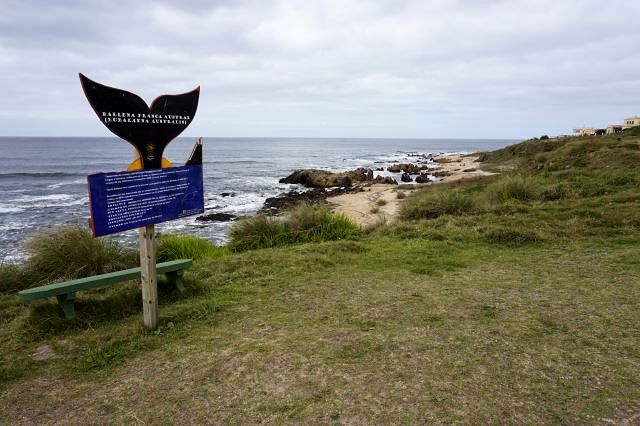
La Pedrera: Observation point for whale watching
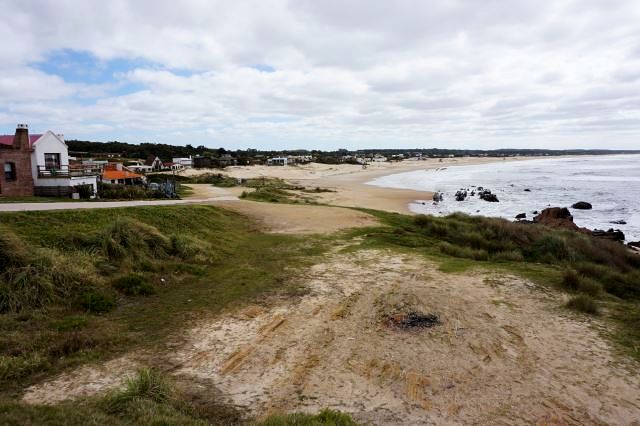
La Pedrera: Long sandy beach

La Pedrera: Facade of house at the coast

La Pedrera: Holiday cottages
I continued on to La Paloma to check out the famous lighthouse. The road did not continue further along the ocean – Laguna de Rocha is in the way. Possibly a ferry could have transferred me across it, but I was not sure about it, so I turned inland and stayed in the regional city of Rocha. There was not much to see. Nevertheless, I liked the two wall paintings by Joaquín Torres García, one of which was not easily accessible to photograph in its entirety. The city has its charm in the simple houses from the beginning of the 20th century. Last, but not least, it has two huge supermarkets which replenished my reserves.
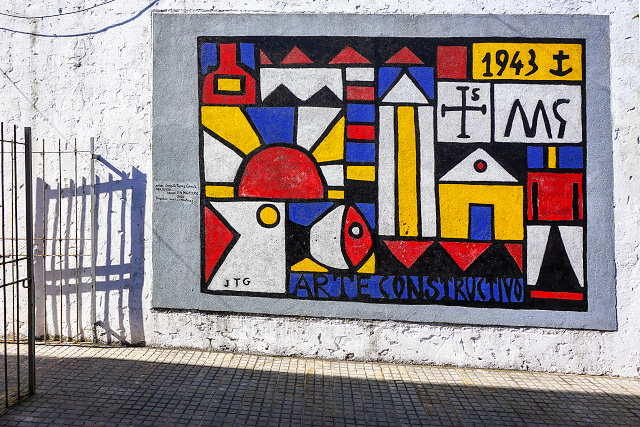
Rocha: Mural by Joaquin Torres García

Rocha: In the streets
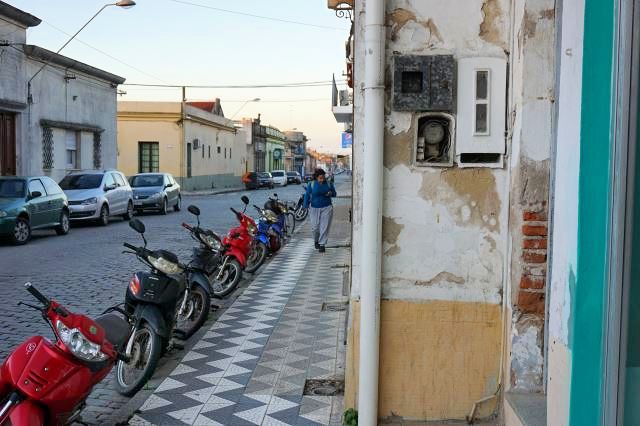
Rocha: In the streets
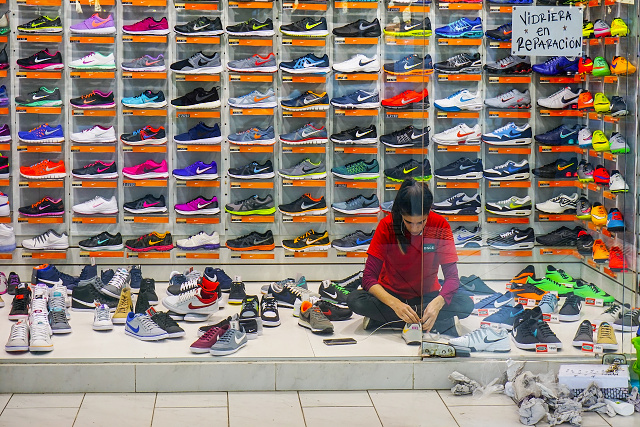
Rocha: Saleswoman in store window threading shoelaces
I started out on Road 9 towards Montevideo. A cycle path continued on the side of the road several km out of the city, used mostly by occasional runners. The path was replaced by a nearly one-meter wide side lane, generally in great condition. With a strong wind behind me, it created altogether great cycling conditions. After about 50 km, I turned on to a minor road which took me to the coast. The countryside seemed totally unpopulated, yet sometimes large areas of land appeared with massive houses on them built by wealthy people.
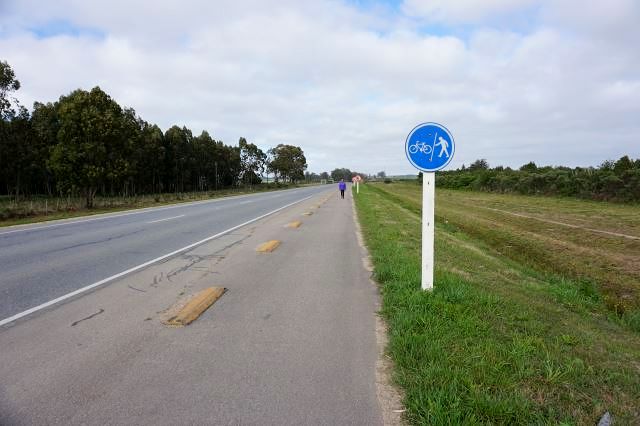
Rocha: The pleasant cycle path leading a few kilometers out of the city

Near José Ignacio: Gigantic inland residences of successful entrepreneurs
The first town along the coast was José Ignacio, where a lovely lighthouse was located, as well as a series of imposing villas. Road 10 continued along the coast, offering vistas of both the ocean and inland lagoons. Cheap old houses, cottages, as well as newly built blocks of holiday apartments almost continuously filled all the space.
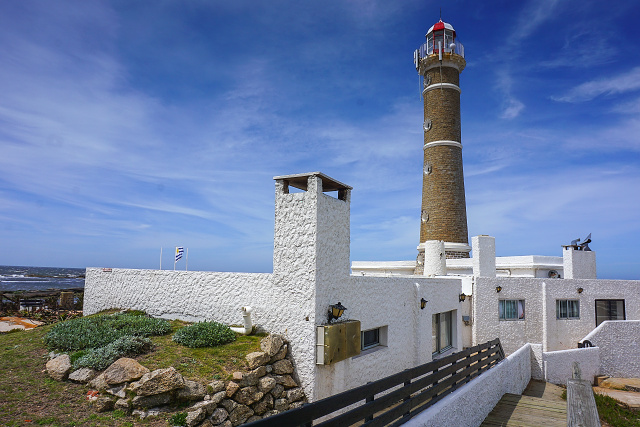
José Ignacio: Lighthouse
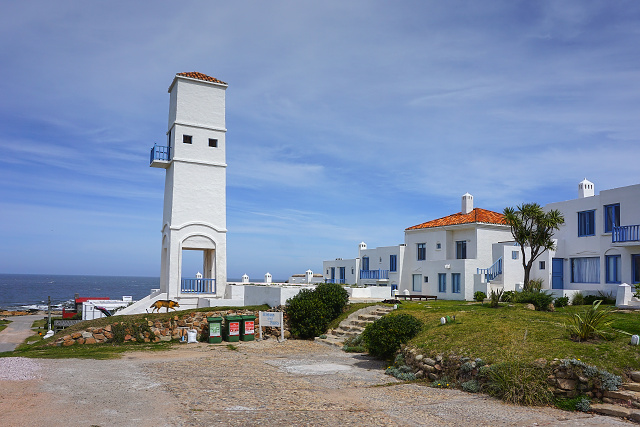
José Ignacio: New construction of holiday homes
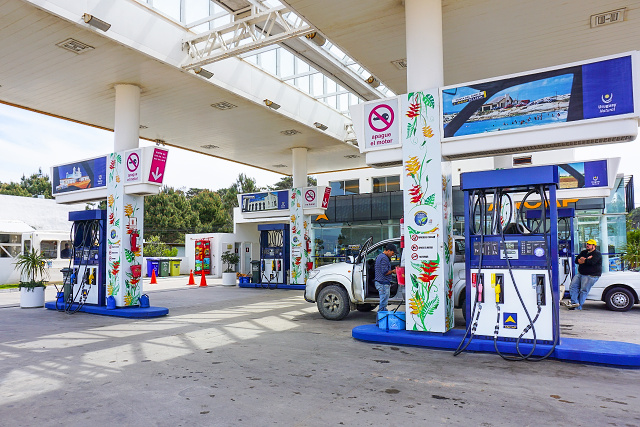
José Ignacio: A nicely painted gas station
Punta del Este
The wind pushed me onwards, so I reached La Barra in no time. After crossing a double-arched bridge, I entered Punta del Este, the most fashionable resort in Uruguay. New Year and the following two weeks represent the top of the season there, with prices reaching astronomical levels. This is due to the richest class from both Uruguay, and mainly from Argentina, who arrive there, because the Buenos Aires surroundings do not have such great beaches. The night life starts in the morning at about 04:00 when people wake up after a great dinner and then party till sunrise. For the rest of the year, most of the restaurants and hotels are empty. It was quite a sad sight to see restaurants with shiny tables and glasses, with only the staff present, but otherwise not a soul. I did not help them to make a living either.
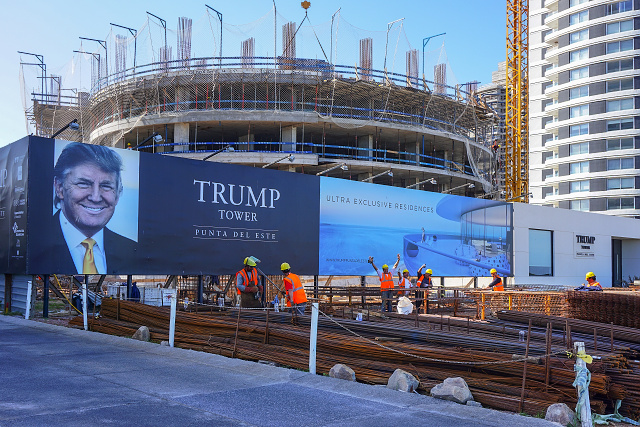
Punta del Este: Donald Trump is building here – note the workers in the center of the image, posing joyfully for me

Punta del Este: Center
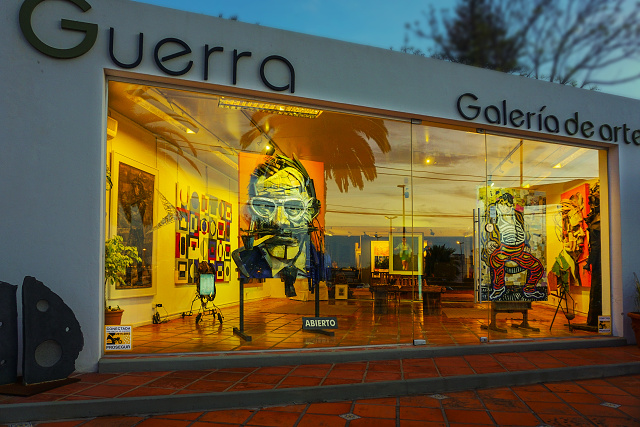
Punta del Este: Gallery of Contemporary Art
The city is situated on a peninsula, which is quite narrow at the end, only wide enough for two blocks of buildings. Manza Beach is on the inland side of the peninsula. The water is calm, no waves and therefore attractive to Uruguayan families. Brava Beach is situated on the opposite side, lashed by Atlantic waves, a favorite of Argentinian visitors. At the very top end of the peninsula is a lighthouse, church and a yacht and small boat harbor. There is no harbor for big ships, so when a passenger ferry arrives, it anchors a short distance from the shore and passengers are transported to the shore in small boats.
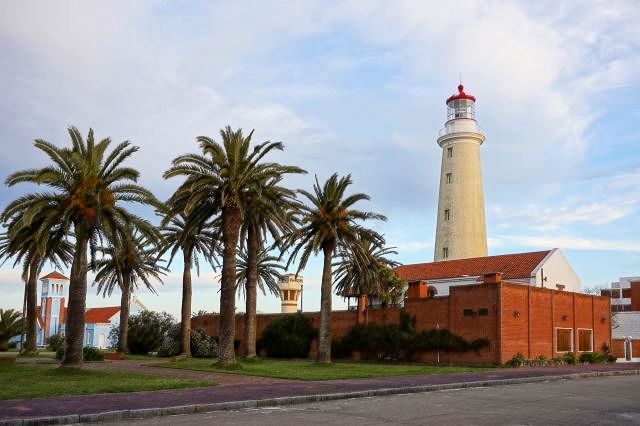
Punta del Este: Lighthouse and church at the very tip of the peninsula
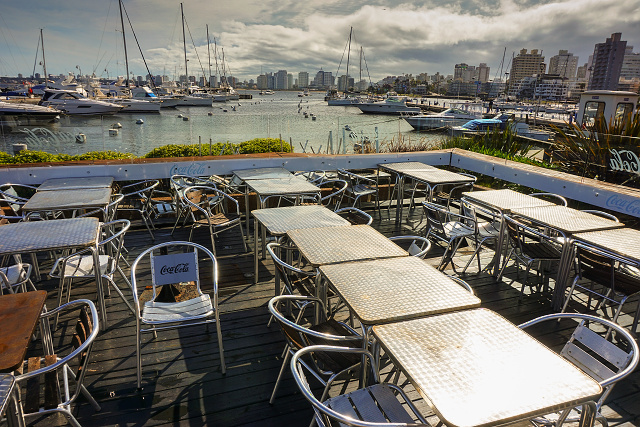
Punta del Este: Harbor
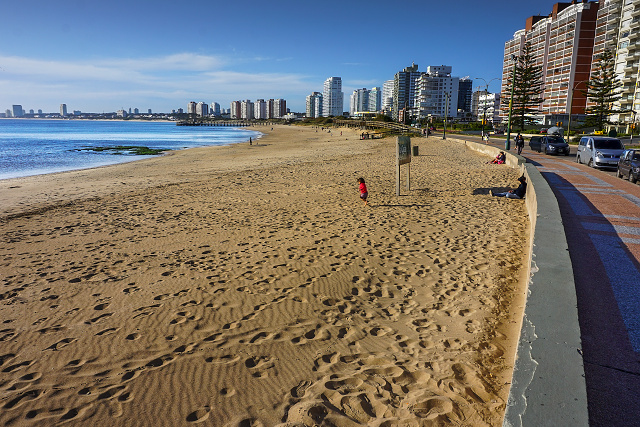
Punta del Este: Playa Mansa is calm, no big waves, very popular among locals
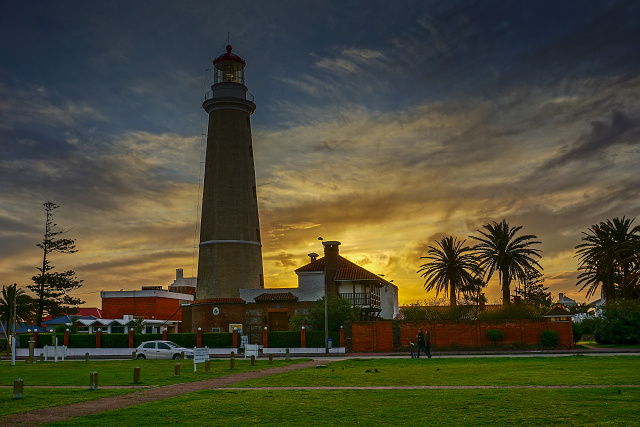
Punta del Este: Sunset appeals to everyone
The nearest campsite, open all year round, is 12 km beyond the town. This is why I stopped in one of the hostels right in the city which was, considering the expensive prices there, the cheapest option. They gave me a reasonable rate, mainly because they had no change. Originally they asked for 1350 pesos, but in the end charged only 1000. The hostel is located in the city center, only 500 meters from the famous Dedos (fingers), which is a very popular statue. In the afternoon, a few women took it over, lying on it, while their friend photographed them. I was not interested in that, so I took photos of it the following morning when the place was deserted.
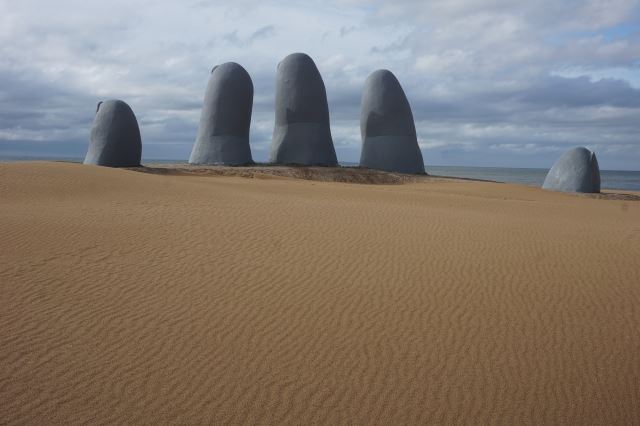
Punta del Este: Dedos (Fingers) by Chilean sculptor, Mario Irarrázabal
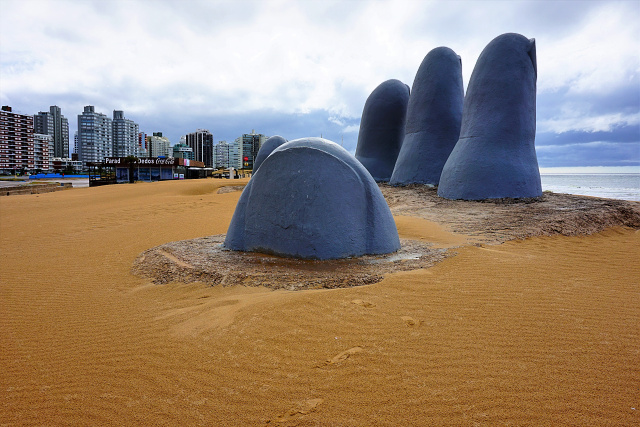
Punta del Este: Dedos sculpture on Playa Brava
I explored the city thoroughly; the beaches and harbor were especially interesting. Otherwise, there were loads of fashion stores, but those did not interest me. I visited the harbor at dusk, and noticed a big, smelly, hairy thing on the embankment. I walked closer and suddenly it bared its teeth at me. It was a massive seal, which first seemed to be dead, until showing its teeth and waving its flipper in warning.
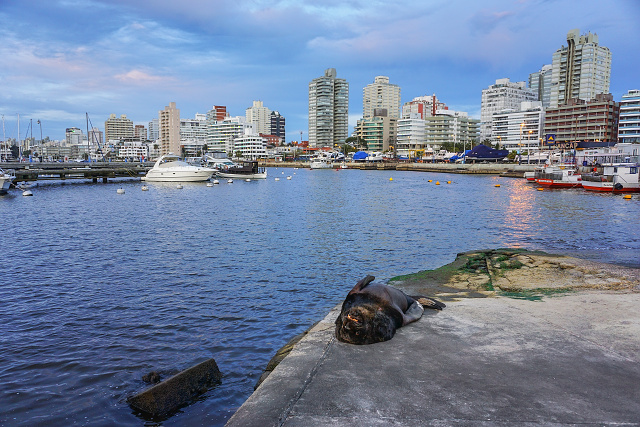
Punta del Este: Overweight seal lazing on the pier
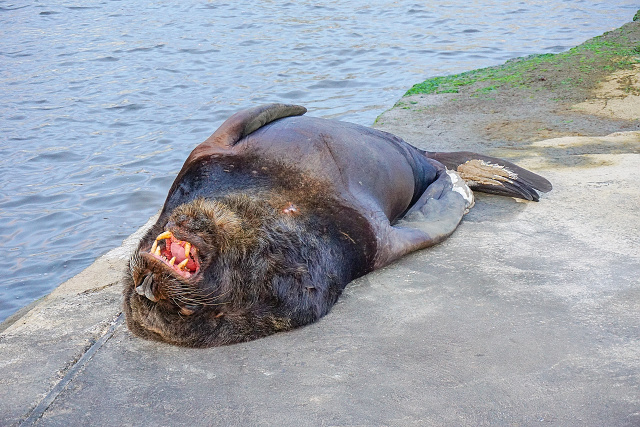
Punta del Este: Harbor seal – I thought it was dead...
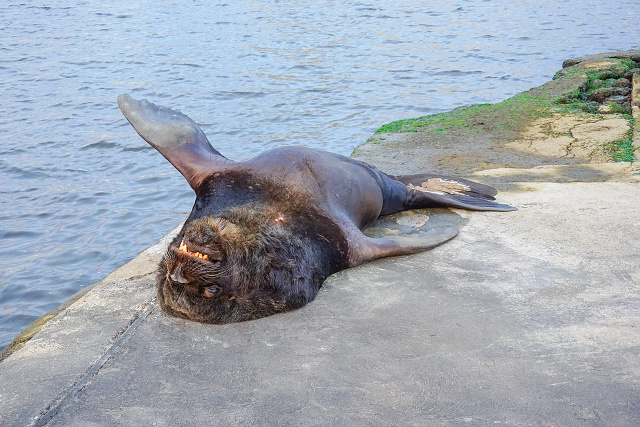
Punta del Este: ... until it waved at me with its fin – then I ran away
The wind was quite whimsical, every day coming from a different direction. One could only be sure that it would blow strongly. I needed to get as close as possible to the 145-km distant Montevideo, so I could arrive there early on the Saturday. The terribly strong wind was working against me. Headwind, light and heavy showers throughout the whole day and considerable cold. After all, it was the equivalent of the beginning of the European April. I followed road IB, the local version of a highway, with opposite directions separated from each other. The luxurious, 1.5 m wide side lane separated me safely from the heavy traffic. Bicycles were not forbidden and police in their cars usually waved a greeting at me.
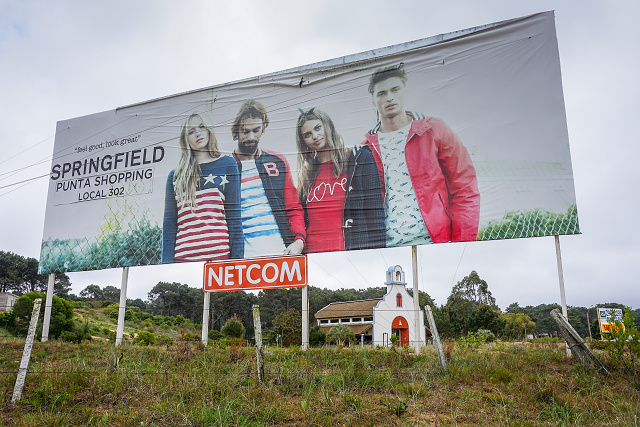
Portezuelo: Church of Nuestra Senora de Trienta y Tres behind the banner
At first, I wanted to leave IB for the coastal Road 10 to Piriápolis, but the bad weather made me change my mind. I would not have seen much anyway and it would have been extra kilometers to cycle. Finally, I went through this boring transfer all the way to the coastal town of Atlántida where I stayed.
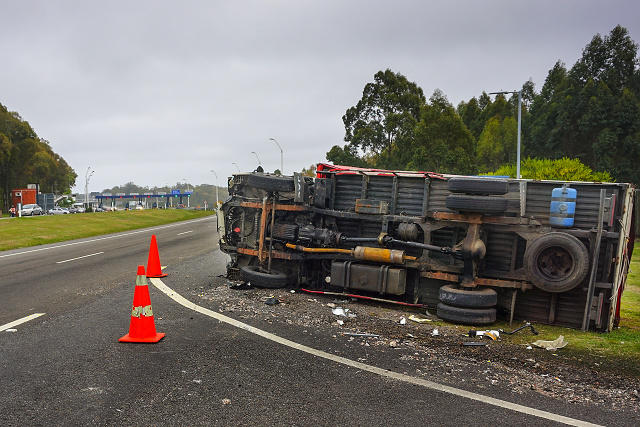
Road IB: Overturned truck with tollgate in the background
Wet and frozen, I searched for accommodation and found an expensive hotel. They were helpful and the receptionist even went outside with me to point out where to find cheap accommodation. I slept at the Tsitsikamma Inn, where they only had two rooms available in a cottage in the garden.
The owners were an elderly couple from South Africa. 20 years before, they could no longer stay in that country and escaped to Uruguay. The man was a writer, he wrote poetry in Afrikaans and the woman translated it into English. According to him, she was not doing so well at it. Apart from writing books, the man was also a passionate photographer of the night sky and for about an hour proudly presented all his photos of an eclipse of the moon and others. Some of them were really good, but since he presented all of them, including the bad ones, it was at times a bit boring. Breakfast the following day made up for it. The lady made a massive omelet, homemade cake and scones, fresh orange juice and good coffee.
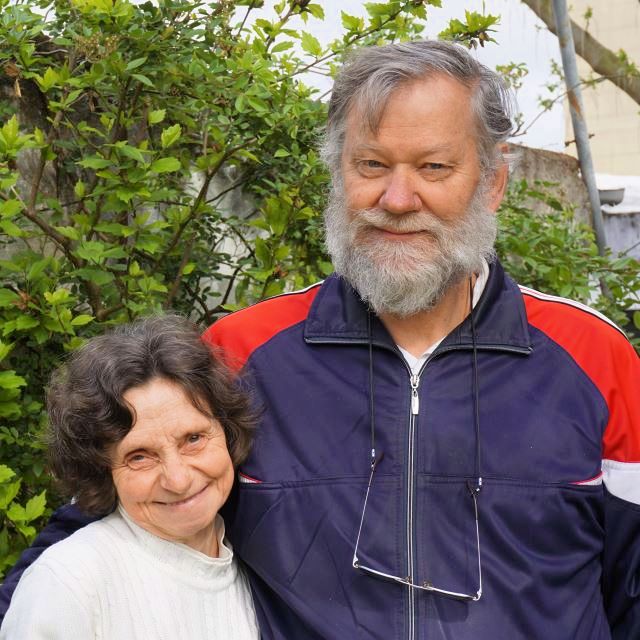
Atlántida: Owners of Tsitsikamma Inn hotel
I gave a short lecture on the theme how to make an eBook. The writer asked me if I had any experience with it, and that he would like to try it. I informed him about the basic formats, recommended the Calibri program, and explained how it works for publication on American Amazon. I already have four books there, so I know a little about it. If this had been the previous day, I would surely have stayed there at a notably cheaper rate.
I had 50 km left before reaching Montevideo. It should have been easy. But on that day, the wind did not present any volatility and instead blew equally strongly and from the same inconvenient direction as the day before. I was slowly getting through it, frozen hands, I cursed myself for not having packed warm gloves. Cycling on IB was safe, unlike in Montevideo. Even though it was a Saturday, the traffic was quite heavy. I cycled in a bus lane. However, I was not the only one, everyone used the lane, nobody respected it. The taxi drivers were the worst of all. When turning right at an intersection, they simply pushed me off the road on which I wanted to continue straight. I had to be alert, or they would have knocked me over. Later I noticed that they did the same to the pedestrians crossing the road at green traffic lights. I arrived at the hostel in the center, which I had booked in advance, and locked the bicycle in the yard, ready to take a rest from it for several days.
